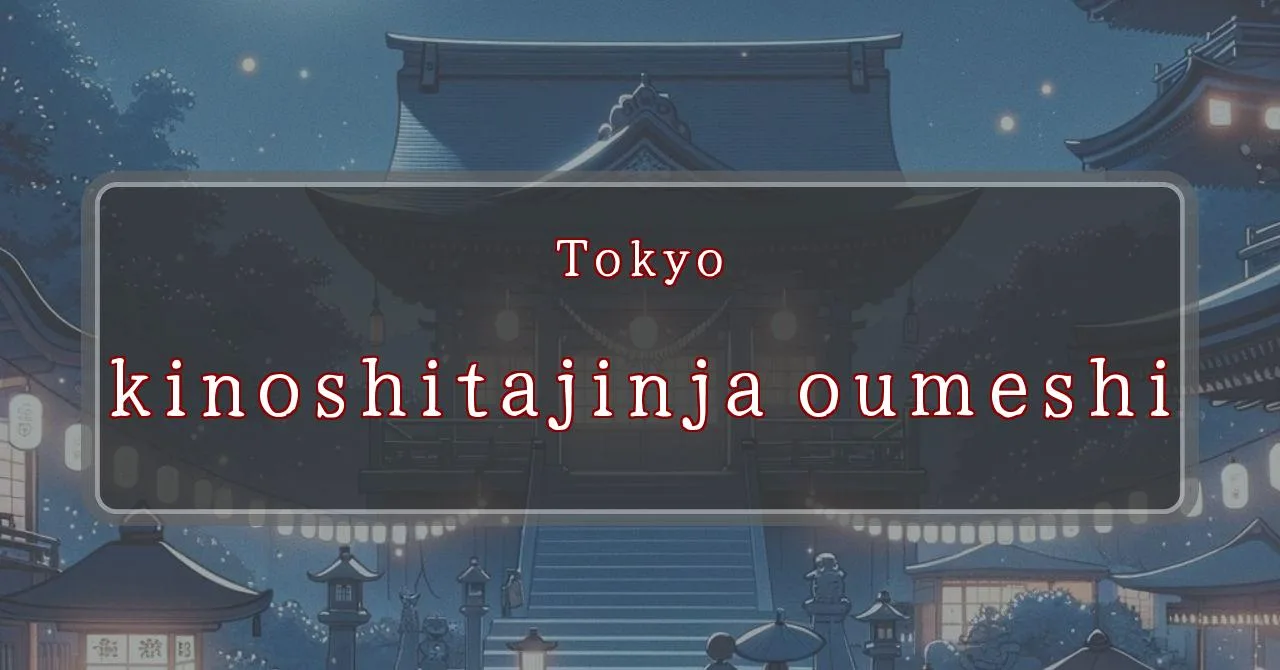Gleaming lights, divine spirits
Basic Information
- Address: 1-467 Kinoshita, Ome, Tokyo
- Phone Number: 0428-22-8825
- Access: 13-minute bus ride from JR Ome Line “Kabe” Station to “Kinoshita Jinja” bus stop, then a 2-minute walk
- Festival Days: April 3, 2024
Main Events and Attractions of the Festival
The Kinoshita Jinja Rei-taisai is a grand festival held annually on April 3rd, featuring a variety of events and attractions that draw many visitors.
Mikoshi Procession
The highlight of the festival is the Mikoshi Procession, where a portable shrine, or mikoshi, is carried through the streets of the Kinoshita district by local residents. The procession is accompanied by lively music and traditional dance performances, creating a vibrant and festive atmosphere.
Shishimai Dance
Another popular attraction is the Shishimai Dance, a traditional lion dance performed by skilled dancers wearing colorful lion costumes. The dance is believed to bring good luck and ward off evil spirits, and it is a captivating sight to behold.
Yatai Village
During the festival, a Yatai Village is set up within the shrine grounds, offering a variety of food and game stalls. Visitors can enjoy traditional Japanese festival fare such as takoyaki, yakisoba, and cotton candy, as well as try their luck at various games and activities.
- Content: Mikoshi Procession, Shishimai Dance, Yatai Village, etc.
- Features: Lively atmosphere, traditional performances, and a variety of food and games
Blessings and Deities
Kinoshita Jinja is believed to bestow various blessings upon its worshippers, including bountiful harvests, prosperous business, family safety, and protection from evil. The enshrined deities are:
- Hototeri-no-Mikoto: God of agriculture, industry, and commerce
- Hayatama-no-Ono-Mikoto: God of wind and thunder
- Okinaga-tarashi-hime-no-Mikoto: Goddess of longevity and good health
- Izanagi-no-Mikoto: God of creation and life
- Izanami-no-Mikoto: Goddess of creation and death
Origin and History
The exact origins of Kinoshita Jinja are unknown, but it is believed to have been established during the Kamakura period (1185-1333). According to historical records, the shrine was initially known as Kumano Daigongen and was later renamed Kinoshita Jinja in 1873. In 1911, Hachiman Jinja was merged into Kinoshita Jinja, forming the current shrine.
Tips and Notes for Visitors
If you plan to visit Kinoshita Jinja during the Rei-taisai festival, here are some tips and notes to keep in mind:
- The festival is held annually on April 3rd, and the shrine and its surroundings can get crowded. It’s recommended to arrive early to avoid large crowds.
- The festival features various events and activities, including a mikoshi procession, Shishimai dance, and Yatai Village. Be sure to check the festival schedule to plan your visit accordingly.
- There is limited parking space available at the shrine, so it’s advisable to use public transportation or park in nearby parking lots.
- The festival is a great opportunity to experience traditional Japanese culture and festivities. Be respectful of local customs and traditions, and enjoy the vibrant atmosphere of the festival.
Parking Information
Kinoshita Jinja has limited parking space available for visitors. If you plan to drive to the shrine, it’s recommended to arrive early to secure a parking spot. There are also several coin-operated parking lots located in the vicinity of the shrine.
Popular Stalls and Food Carts in Recent Years
| Type of Stall | Description |
|---|---|
| Takoyaki | A staple at Japanese festivals. Characterized by a crispy outside and a creamy inside. |
| Jaga Butter | A simple yet popular snack of hot potatoes lavishly topped with melted butter. |
| Baby Castella | Small castella cakes, sweet and fluffy treats enjoyed by children and adults alike. |
| Grilled Ayu with Salt | Fresh ayu fish grilled whole with salt, a savory taste of Japanese summer. |
| Shaapin | A unique gourmet item influenced by foreign cuisine, with a chewy skin wrapping the filling. |
| Okonomiyaki | A Japanese grilled dish where you often choose your own ingredients for a personalized flavor. |
| Cotton Candy | A fluffy, sweet snack that’s extremely popular with children. |
| Chocolate Banana | A banana coated in chocolate, a fun and visually appealing dessert. |
| Kushiyaki | Various types of ingredients skewered and grilled, an easy-to-enjoy snack. |
| Yakisoba | Fried noodles mixed with a special sauce, a fast food favorite in Japan. |



